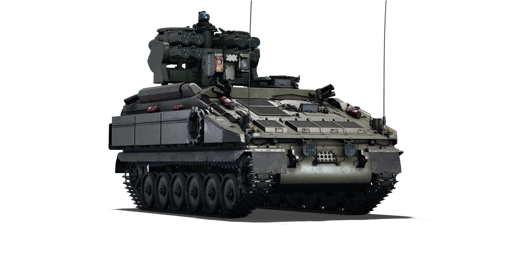



The Stormer HVM is a variant of the Alvis Stormer AFV that was designed to provide short-range air defense for British ground forces. It was created in response to the growing danger of attack helicopters, such as the Soviet Mi-24 Hind. The British Army opted for the Starstreak missile due to its three-dart warhead, which can overcome both armour and countermeasures. The Stormer's chassis offered excellent crew protection and mobility, making it a suitable platform for the Starstreak missile. The vehicle can hold a maximum of 12 Starstreak missiles, which can destroy low-flying targets, including helicopters, jets, and drones, up to 7 km away. The Stormer HVM entered service in 1997 and was later deployed to Iraq. Oman also purchased some for their own defense needs, while Ukraine received some of the units. As air threats to Western forces diminished, the British Army retired the Stormer HVM in 2009 and sought more advanced alternatives like the Sky Sabre.
The Stormer HVM was introduced in Update 1.89 "Imperial Navy". It is a unique and powerful vehicle that can challenge any airborne opponent with its missiles. However, despite its capabilities, the Stormer HVM does have some drawbacks. One of the main drawbacks is its limited range. With a maximum range of 7 km, it will not be able to engage targets that are located further away. Additionally, the Stormer HVM's effectiveness may be reduced against highly manoeuvrable and fast-moving aerial threats. Overall, it is best used as an early-spawn vehicle to quickly neutralize helicopters and possibly engage lightly armoured targets.
| Ammunition | Type | Armor penetration (mm) at a distance: | |||||
|---|---|---|---|---|---|---|---|
| 10 m | 100 m | 500 m | 1000 m | 1500 m | 2000 m | ||
| SAM | 30 | 30 | 30 | 30 | 30 | 30 | |












Mobility | |
|---|---|
Protection |
|---|
Firepower | ||
|---|---|---|